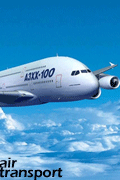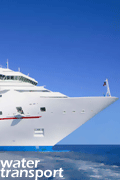Sunday, March 22, 2009
The Transport Operations (Marine Safety) Regulation 2004 introduced new safety training requirements for crew, effective from 1 September 2006. These requirements aim to improve the skills of all crew members to assist in the safe operation of the boat. These new requirements include:
For long term crew (employed for more than six months) Occupational Health and Safety at Sea course, or an equivalent course, such as Elements of Shipboard Safety or a Standards of Training, Certification and Watchkeeping (STCW) course approved by the Australian Maritime Safety Authority (AMSA) or Small Vessel Operators Certificate (SVOC) course, is mandatory.
For short term crew (employed for less than six months) a safety induction course which complies with the requirements of the National Marine Safety Committee (NMSC) National Marine Guidance manual, Guideline for Onboard Safety Training, Australian Domestic Vessels is mandatory. The six month period relates to the term of employment as a member of crew and commences from the start date. This qualifying period is unaffected by the movement of crew from one ship to another in circumstances where the owner has a fleet of commercial or fishing ships. It is also unaffected by seasonal influences in the fishing or commercial sector that interrupt the period of employment of crew.
Example One: If the same crew of a fishing ship are employed by the same company or ship owner but their employment contract is geared to the opening and closure of fishing/trawl seasons, the time employed as crew is taken as the cumulative total of their individual periods of employment.
Example Two: If the same crew are employed by the same company or ship owner on an 'on again/off again basis to meet business needs, the time employed as crew is taken as the cumulative total of their individual periods of employment.
Note: The only exception to the above is where the period in between the termination and commencement of a crew employment contract exceeds six consecutive months with a consecutive 12 month block.
The safety training requirements apply to every member of crew. The Transport Operations (Marine Safety) Regulation 2004 defines crew as including the ship's crew members and any other persons employed or engaged in any capacity on board, but does not include the master or pilot of the ship.
Anyone who is employed by the owner or master to do something on board (including customer service staff) is required to complete the safety course, regardless of the capacity in which they are employed or engaged. Persons who may work on a ship but are not employed or engaged by the owner or master are not required to complete the safety training. For example, a photographer who travels on a ship each day but is not employed or engaged by the marine operator is not required to complete the training.
For long term crew (employed for more than six months) Occupational Health and Safety at Sea course, or an equivalent course, such as Elements of Shipboard Safety or a Standards of Training, Certification and Watchkeeping (STCW) course approved by the Australian Maritime Safety Authority (AMSA) or Small Vessel Operators Certificate (SVOC) course, is mandatory.
For short term crew (employed for less than six months) a safety induction course which complies with the requirements of the National Marine Safety Committee (NMSC) National Marine Guidance manual, Guideline for Onboard Safety Training, Australian Domestic Vessels is mandatory. The six month period relates to the term of employment as a member of crew and commences from the start date. This qualifying period is unaffected by the movement of crew from one ship to another in circumstances where the owner has a fleet of commercial or fishing ships. It is also unaffected by seasonal influences in the fishing or commercial sector that interrupt the period of employment of crew.
Example One: If the same crew of a fishing ship are employed by the same company or ship owner but their employment contract is geared to the opening and closure of fishing/trawl seasons, the time employed as crew is taken as the cumulative total of their individual periods of employment.
Example Two: If the same crew are employed by the same company or ship owner on an 'on again/off again basis to meet business needs, the time employed as crew is taken as the cumulative total of their individual periods of employment.
Note: The only exception to the above is where the period in between the termination and commencement of a crew employment contract exceeds six consecutive months with a consecutive 12 month block.
The safety training requirements apply to every member of crew. The Transport Operations (Marine Safety) Regulation 2004 defines crew as including the ship's crew members and any other persons employed or engaged in any capacity on board, but does not include the master or pilot of the ship.
Anyone who is employed by the owner or master to do something on board (including customer service staff) is required to complete the safety course, regardless of the capacity in which they are employed or engaged. Persons who may work on a ship but are not employed or engaged by the owner or master are not required to complete the safety training. For example, a photographer who travels on a ship each day but is not employed or engaged by the marine operator is not required to complete the training.
posted by transport blogs
@ 9:56 PM
permanent link | Post a Comment
|
![]()









